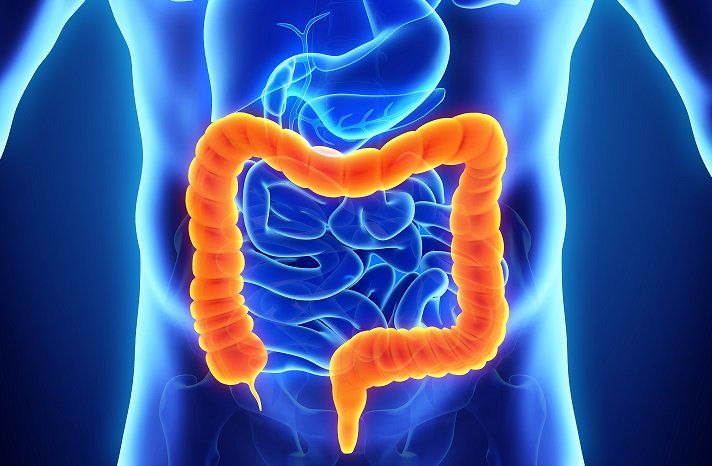Article
Ustekinumab Maintains Ulcerative Colitis Remission
Author(s):
Ustekinumab (Stelara, Janssen Biotech) was more effective at one year than placebo for inducing and maintaining remission in patients with moderate-to-severe ulcerative colitis, NEJM study shows.
Ustekinumab (Stelara, Janssen Biotech) was more effective at one year than placebo for inducing and maintaining remission in patients with moderate-to-severe ulcerative colitis, NEJM study shows. (©Nerthuz, AdobeStock.com)

Ustekinumab (Stelara, Janssen Biotech) was more effective at one year than placebo for inducing and maintaining remission in patients with moderate-to-severe ulcerative colitis, say researchers writing in the New England Journal of Medicine last month.
Current therapies for ulcerative colitis are limited by increased risks of infection or cancer, or by loss of clinical benefit. Ustekinumab, a monoclonal antibody to the p40 subunit of interleukin-12 and interleukin-23, has been approved for the treatment of psoriasis, psoriatic arthritis, and Crohn’s disease. The drug has been shown in a phase 3 trial to induce a response at eight weeks in Crohn’s disease, and maintain clinical benefit for one year.
“The therapeutic goal in patients with ulcerative colitis is to induce and maintain long-term remission, because the disease often has a relapsing and remitting course,” wrote the authors, led by Bruce E. Sands, M.D., of Icahn School of Medicine at Mount Sinai in New York.
In this phase 3 trial, known as UNIFI, of 961 patients with moderate-to-severe ulcerative colitis, researchers compared outcomes from ustekinumab as eight-week intravenous induction therapy and 44-week subcutaneous maintenance therapy to placebo. The primary end point was clinical remission, defined as a total score of two or less on the Mayo scale.
At the end of eight weeks, clinical remission was higher with ustekinumab 130 mg (15.6 percent) or 6 mg/kg (15.5 percent) than that placebo (5.3 percent) (P<0.001 for both comparisons). Responders to induction therapy also had higher clinical remission rates at week 44 with 90 mg subcutaneous ustekinumab every 12 weeks (38.4 percent) or every eight weeks (43.8 percent) than among patients assigned to placebo (24.0 percent) (P=0.002 and P<0.001, respectively).
Serious adverse events were similar between ustekinumab and placebo. At one year there were two deaths (one each from acute respiratory distress syndrome and hemorrhage from esophageal varices) and seven cancers (one each of prostate, colon, renal papillary, and rectal cancer and three nonmelanoma skin cancers) in the 825 ustekinumab treated patients compared to no deaths and one case of testicular cancer among the 319 patients on placebo.
Clinical response, endoscopic healing, corticosteroid-free clinical remission, and health-related quality-of-life scores were better with ustekinumab than placebo. For the major secondary end point of maintenance of clinical remission through week 44 among patients in clinical remission at baseline, which was met by patients receiving ustekinumab every 12 weeks, “the percentage in the group receiving ustekinumab every eight weeks was higher than in the placebo group only for the alternative definition of clinical remission that was used to support the FDA submission,” the authors wrote.
Some possible differences in dose were evident for several end points. A higher percentage of patients who had a clinical response, larger decreases in the partial Mayo score, and greater reductions in fecal lactoferrin and calprotectin concentrations at week eight were observed with 6 mg/kg of ustekinumab than with 130 mg. At week 44, for the more objective and stringent end points, such as endoscopic improvement, histo-endoscopic mucosal healing, corticosteroid-free remission, and elimination of corticosteroids at least 90 days before week 44, greater clinical benefit was seen with ustekinumab every eight weeks than with every 12 weeks.
“Although our findings suggest that ustekinumab was effective in patients with or without previous treatment failure with biologics for both induction and maintenance therapy, the percentages of patients in whom each end point was achieved were lower across groups with previous treatment failure with biologics,” the authors wrote.
REFERENCE
Bruce E. Sands, William J. Sandborn, Remo Panaccione, et al. “Ustekinumab as Induction and Maintenance Therapy for Ulcerative Colitis.” N Engl J Med. September 26, 2019. doi: 10.1056/NEJMoa1900750.




